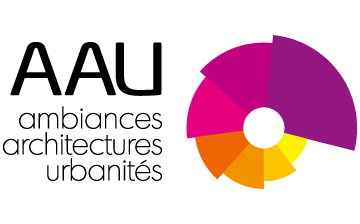Les représentations visuelles de l’espace sonore
VISUAL REPRESENTATIONS OF SOUND PHENOMENONS. APPLICATION TO TOWN-PLANNING
Cécile REGNAULT - Thèse de doctorat soutenue en 2001
Encadrement : J.F. Augoyard
FR
Représenter l'espace est une préoccupation constante des aménageurs. Ces visualisations (carte, diagramme, plan, coupe, élévation, photographies, images de synthèse...) sont à la fois, des outils graphiques d'analyse, des outils de conception, des outils de communication assurant la nécessaire coordination entre les acteurs de l'aménagement. Parallèlement la difficulté d'intégration des connaissances sur les phénomènes sonores situés dans les projets d'aménagement est doublée d'une véritable carence dans les moyens graphiques mis à disposition pour visualiser le sonore dans un contexte construit. Réalisé à partir d'un corpus d'images pluridisciplinaire (phonétique, acoustique, musique, électroacoustique, écologie sonore, arts plastiques, photographie) l'inventaire général mis en oeuvre constitue l'essentiel de ce travail exploratoire : analyser les images en s'inspirant des méthodes de la sémiotique visuelle, synthétiser le corpus d'images sous forme d'un catalogue raisonné, classer et classifier les images. Quatre grands types de dispositifs visuels (cartographie, transcription temporelle, diagramme et perspective) sont définis comme fond support des phénomènes sonores représentables selon trois approches (flux, chose sonifère, auditum). Leurs fonctions communicatives (décrire des qualités sonores, montrer des faits sonores, expliquer des concepts sonores) sont liées à leur degré de schématisation dont nous avons relevé 4 niveaux : image indicielle de type photographique, dessin technique, croquis, schéma de principe. Réalisé à titre expérimental sur un parcours sonore urbain, le test de validité de la transcription temporelle sur fond sonagraphique (logiciel Acousmographe (INA-GRM) conçu pour la notation musicale) semble confirmer l'intérêt des emprunts d'outil de visualisation et des transferts de connaissances entre disciplines. Toutefois, des adaptations sont nécessaires pour appliquer les analyses aux différentes échelles d'écoute: objet sonore, figure sonore.
EN
Represent space is a continual concern for town-planners. These visualizations {maps, diagrams, plans, sections, elevations, snaps, simulation pictures) are both graphic analysis tools, designing and communicating ones ensuring the necessary coordination between the city-planners. In the same way, the difficulty for knowledge integration about sonic phenomenons in the context of development projects, is coupled with a real deficiency in graphic means at disposal to visualize sonic in a built environment. Based on a pluridisciplinary corpus of views (phonetics, acoustic, music, electroacoustic, sound ecology, plastic arts, photography), the making of this general assessment constitutes the essential part of this exploration work : analyze frames, inspired by the methodology of visual semiotics, synthesizing the picture corpus in a reasoned catalogue, classifying pictures.
Four great types of visual plans [map-making, temporal transcription, diagram and perspective) are defined like medium background of representable sonic phenomenons, according to three approaches (fluxus, sonific thing, auditum). Their communicating functions (describing sonic qualities, showing sonic facts, explaining sonic concepts), are bound to their schematization degrees, of witch we have noticed four levels : indexial picture (snap type), technical drawing, sketch, outline.
Realize in an experimental way on an urban sonic journey, the validity test of temporal transcription on sonagraphic background [Software Acousmographe, for musical expression) seems to confirm the significance of the borrowing of visualization tools and knowledge translations between subjects.
However, adaptations are necessary so as to apply analysis to the different scales of listening : sonic object, sonic illustration, soundscape.
In the long run, the integration of these visualizations in an Information Geographic System reaches a double requirement: transdisciplinary analysis of sound environment, complementary nature of audible and visible representations. Graphic and plastic inventions to come should improve theoritical overhangs, should they be sensorial, structural or conceptual.
